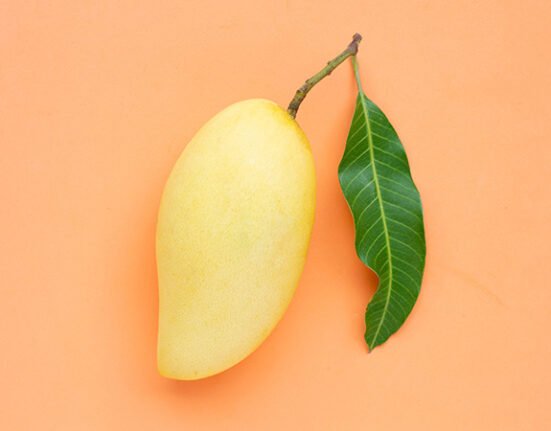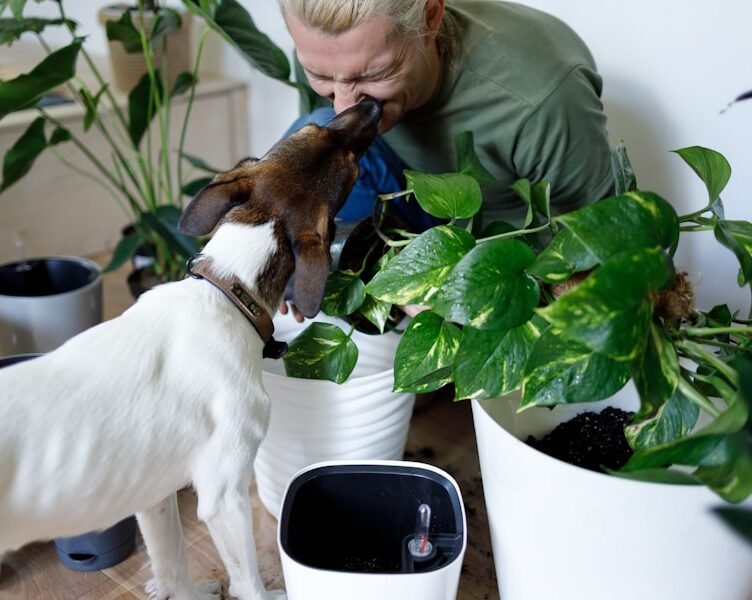Growing vegetables indoors offers numerous advantages, and recognizing these benefits can inspire individuals to establish their own indoor vegetable gardens. A primary advantage is having access to fresh, organic produce at all times. By cultivating vegetables indoors, individuals can ensure that their produce is free from harmful pesticides and chemicals, resulting in a healthier and more nutritious diet.
Furthermore, indoor vegetable gardening enables year-round cultivation, regardless of external weather conditions. This means that fresh vegetables can be enjoyed even during the winter months. Another significant benefit of indoor vegetable gardening is the ability to control the growing environment.
By cultivating vegetables indoors, individuals can regulate factors such as light, temperature, and humidity, leading to higher yields and superior quality produce. Indoor gardening also offers greater flexibility in terms of space, making it possible for individuals residing in apartments or small homes to still reap the benefits of growing their own vegetables. Overall, the advantages of growing vegetables indoors are multifaceted and can have a positive impact on both physical health and overall well-being.
Key Takeaways
- Growing vegetables indoors can be a successful and rewarding endeavor with the right knowledge and tools.
- Indoor vegetable gardening offers benefits such as year-round access to fresh produce and control over growing conditions.
- Factors such as light, temperature, soil, water, and nutrients are essential for successful indoor vegetable gardening.
- Choosing the right vegetables for indoor growth, such as herbs, leafy greens, and compact varieties, is crucial for a thriving garden.
- Common challenges in indoor vegetable gardening, such as pests and diseases, can be overcome with proper care and attention.
Essential Factors for Successful Indoor Vegetable Gardening
Lighting: The Key to Photosynthesis
Since indoor plants do not have access to natural sunlight, it is crucial to provide them with adequate artificial light. LED grow lights are a popular choice for indoor vegetable gardening, as they provide the full spectrum of light that plants need for photosynthesis. Additionally, it is important to consider the duration of light exposure, as different vegetables have varying light requirements.
Temperature and Ventilation: A Delicate Balance
Temperature is another essential factor for successful indoor vegetable gardening. Most vegetables thrive in temperatures between 65-75 degrees Fahrenheit, so it is important to maintain a consistent temperature within this range. Proper ventilation and air circulation can help regulate temperature and prevent issues such as mold and mildew.
Humidity and Air Quality: The Final Pieces of the Puzzle
Humidity levels should also be monitored, as some vegetables require higher humidity levels than others. By carefully considering these essential factors, individuals can set themselves up for success in their indoor vegetable gardens.
Choosing the Right Vegetables for Indoor Growth
Not all vegetables are well-suited for indoor growth, so it is important to carefully select the right vegetables for your indoor garden. Leafy greens such as lettuce, spinach, and kale are excellent choices for indoor gardening, as they have relatively low light requirements and can thrive in containers. Herbs such as basil, cilantro, and parsley are also well-suited for indoor growth and can add flavor and freshness to your meals.
Root vegetables such as carrots and radishes can also be grown indoors, but they require deeper containers to accommodate their root systems. Tomatoes and peppers are popular choices for indoor gardening, but they require more light and space compared to other vegetables. Ultimately, the right vegetables for indoor growth will depend on factors such as available space, light exposure, and personal preferences.
By choosing the right vegetables for indoor growth, individuals can maximize their chances of success in their indoor vegetable gardens.
The Role of Light and Temperature in Indoor Vegetable Gardening
| Aspect | Information |
|---|---|
| Lighting | Plants need at least 6 hours of sunlight or artificial light per day. |
| Temperature | Most vegetables grow best in temperatures between 65-75°F (18-24°C). |
| Humidity | Indoor plants generally prefer a humidity level of 40-60%. |
| Watering | Water the plants when the top inch of soil feels dry to the touch. |
| Soil | Use a well-draining potting mix with added nutrients for indoor vegetables. |
| Containers | Choose containers that are large enough for the plant’s root system and have drainage holes. |
Light and temperature play crucial roles in the success of indoor vegetable gardening. As mentioned earlier, providing adequate light is essential for the growth and development of indoor vegetable plants. Different vegetables have varying light requirements, so it is important to research the specific needs of the vegetables you plan to grow.
In addition to providing sufficient light, it is important to consider the duration of light exposure. Most vegetables require 12-16 hours of light per day, so it may be necessary to use artificial grow lights to supplement natural light. Temperature also plays a significant role in indoor vegetable gardening.
Most vegetables thrive in temperatures between 65-75 degrees Fahrenheit, so it is important to maintain a consistent temperature within this range. Fluctuations in temperature can stress plants and lead to issues such as poor growth and disease susceptibility. Proper ventilation and air circulation can help regulate temperature and prevent issues such as mold and mildew.
By understanding the role of light and temperature in indoor vegetable gardening, individuals can create optimal growing conditions for their plants.
Soil, Water, and Nutrient Considerations for Indoor Vegetable Plants
In addition to light and temperature, soil, water, and nutrients are essential considerations for successful indoor vegetable gardening. When it comes to soil, it is important to use a high-quality potting mix that is well-draining and nutrient-rich. Avoid using garden soil, as it may contain pests and diseases that can harm indoor plants.
Watering is another crucial aspect of indoor vegetable gardening, as overwatering or underwatering can lead to issues such as root rot or nutrient deficiencies. It is important to water plants consistently and monitor soil moisture levels to ensure that plants receive adequate hydration. Nutrient considerations are also important for indoor vegetable plants.
While high-quality potting mixes contain some nutrients, it may be necessary to supplement with fertilizers to ensure that plants receive all the essential nutrients they need for healthy growth. Organic fertilizers are a popular choice for indoor vegetable gardening, as they provide nutrients in a natural and sustainable manner. By carefully considering soil, water, and nutrient needs, individuals can provide their indoor vegetable plants with the best possible growing conditions.
Common Challenges and Solutions for Indoor Vegetable Gardening
Overcoming Pest Infestations
One common challenge of indoor vegetable gardening is pest infestations. Indoor plants are still susceptible to pests such as aphids, spider mites, and whiteflies. However, regular monitoring and proper plant care can help prevent pest infestations. If pests do appear, there are natural pest control methods that can be used to eliminate them without harming the plants.
Preventing Disease Issues
Another common challenge is disease susceptibility. Indoor plants may be more prone to issues such as powdery mildew or damping off. Proper ventilation and air circulation can help prevent disease issues, as can maintaining proper watering practices to prevent overwatering or waterlogged soil. Additionally, using disease-resistant varieties of vegetables can help minimize the risk of disease issues.
Proactive Solutions for a Thriving Garden
By being aware of common challenges and implementing proactive solutions, individuals can minimize the risk of issues in their indoor vegetable gardens. With careful planning, attention to detail, and the right strategies, indoor gardeners can enjoy a bountiful harvest and a thriving indoor garden.
Tips for Maximizing Yield and Flavor in Indoor Vegetable Gardens
There are several tips that can help individuals maximize yield and flavor in their indoor vegetable gardens. One tip is to provide proper support for vining vegetables such as tomatoes and cucumbers, as this can help maximize space and encourage better fruit production. Another tip is to practice succession planting, which involves planting new crops as soon as old ones are harvested.
This can help ensure a continuous supply of fresh vegetables throughout the growing season. Additionally, it is important to harvest vegetables at the peak of ripeness, as this can maximize flavor and nutritional content. Proper pruning and maintenance can also help maximize yield and encourage healthy plant growth.
Finally, paying attention to plant spacing and container size can help prevent overcrowding and ensure that plants have enough room to grow and thrive. By implementing these tips, individuals can make the most of their indoor vegetable gardens and enjoy a bountiful harvest of fresh, flavorful produce. In conclusion, understanding the science behind growing vegetables indoors is essential for successful indoor vegetable gardening.
By carefully considering factors such as light, temperature, soil, water, nutrients, and common challenges, individuals can create optimal growing conditions for their indoor vegetable plants. Choosing the right vegetables for indoor growth and implementing tips for maximizing yield and flavor can further enhance the success of indoor vegetable gardens. Ultimately, indoor vegetable gardening offers numerous benefits and provides individuals with the opportunity to enjoy fresh, organic produce year-round.
With careful planning and attention to detail, anyone can experience the joys of growing their own vegetables indoors.
FAQs
What are the benefits of growing vegetables indoors?
Indoor vegetable gardening allows for year-round cultivation, regardless of the outdoor climate. It also provides control over growing conditions, such as light, temperature, and humidity, leading to potentially higher yields and better quality produce.
What are the key factors to consider when growing vegetables indoors?
Key factors to consider when growing vegetables indoors include choosing the right containers, providing adequate light, maintaining proper temperature and humidity levels, selecting the appropriate growing medium, and ensuring proper air circulation and ventilation.
What are the best vegetables to grow indoors?
Some of the best vegetables to grow indoors include leafy greens like lettuce and spinach, herbs such as basil and cilantro, and compact varieties of tomatoes, peppers, and cucumbers. These vegetables are well-suited for indoor growing due to their relatively small size and adaptability to container gardening.
What kind of lighting is needed for indoor vegetable gardening?
Indoor vegetable gardening requires adequate light for plant growth. Natural light from a south-facing window can be supplemented with artificial grow lights, such as fluorescent, LED, or high-intensity discharge (HID) lights, to ensure that plants receive the necessary amount of light for photosynthesis.
What are some common challenges of growing vegetables indoors?
Common challenges of growing vegetables indoors include managing pests and diseases, providing proper nutrition through fertilization, preventing overwatering or underwatering, and addressing potential issues related to limited space and airflow. Additionally, ensuring pollination for certain fruiting plants like tomatoes may require manual intervention.








2 Comments